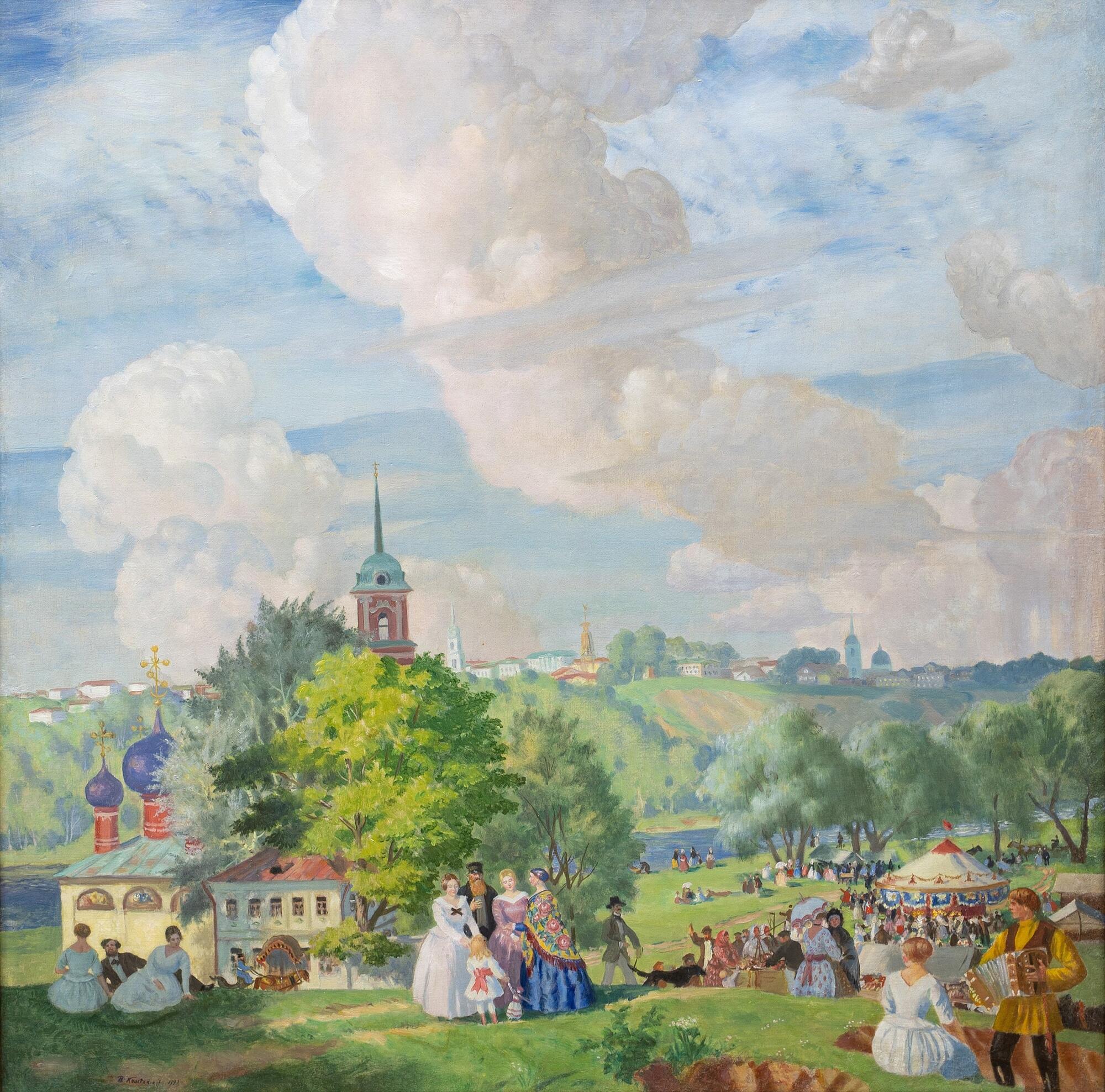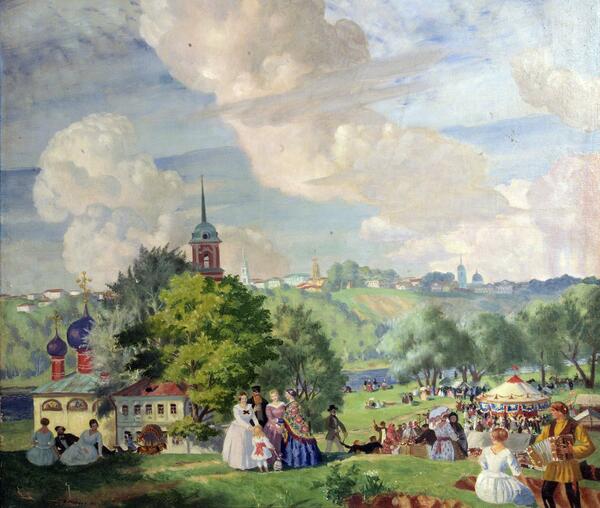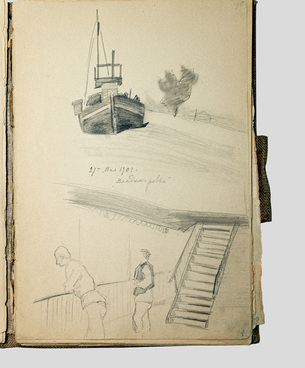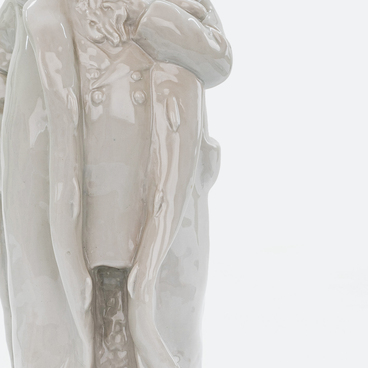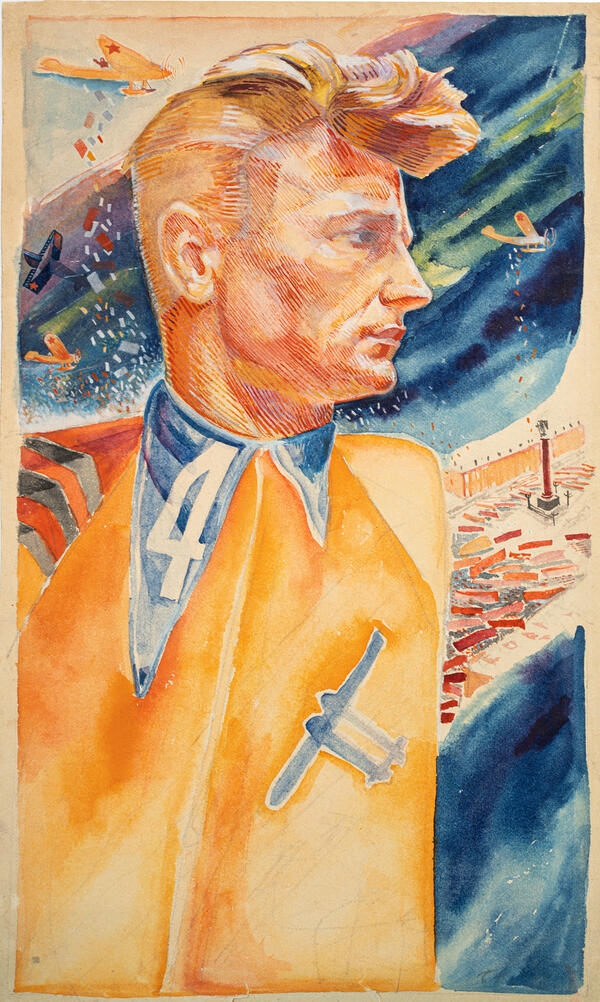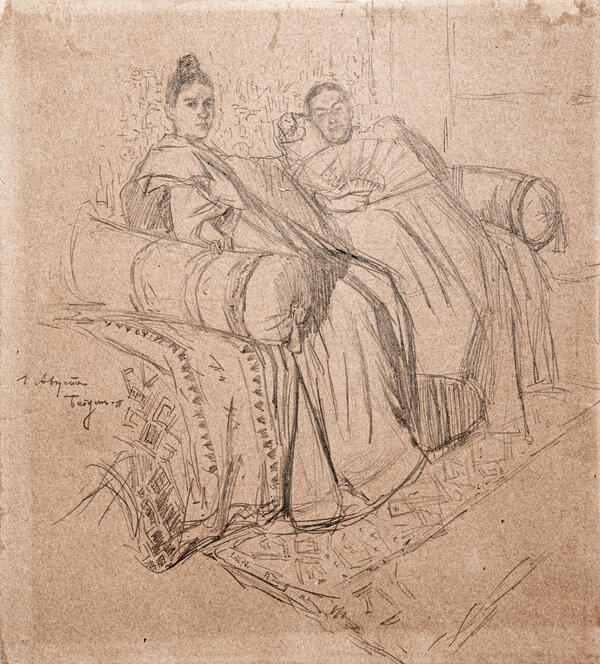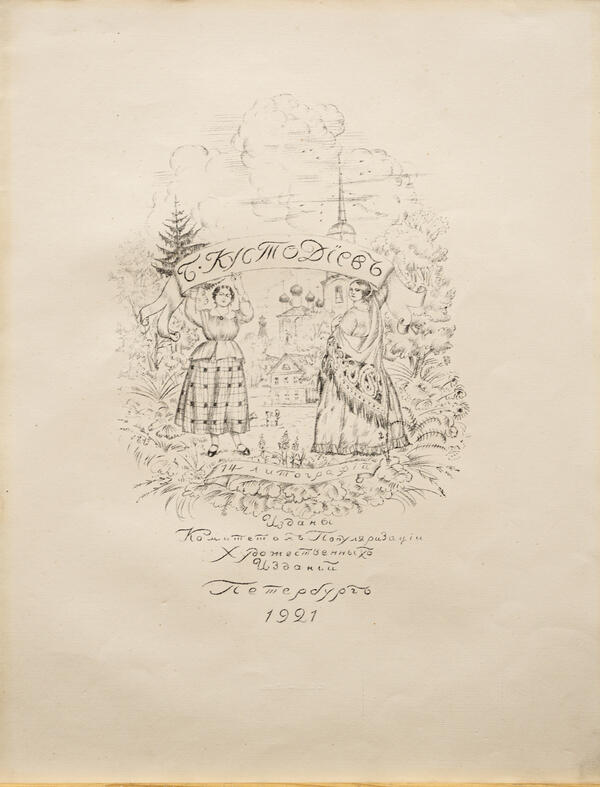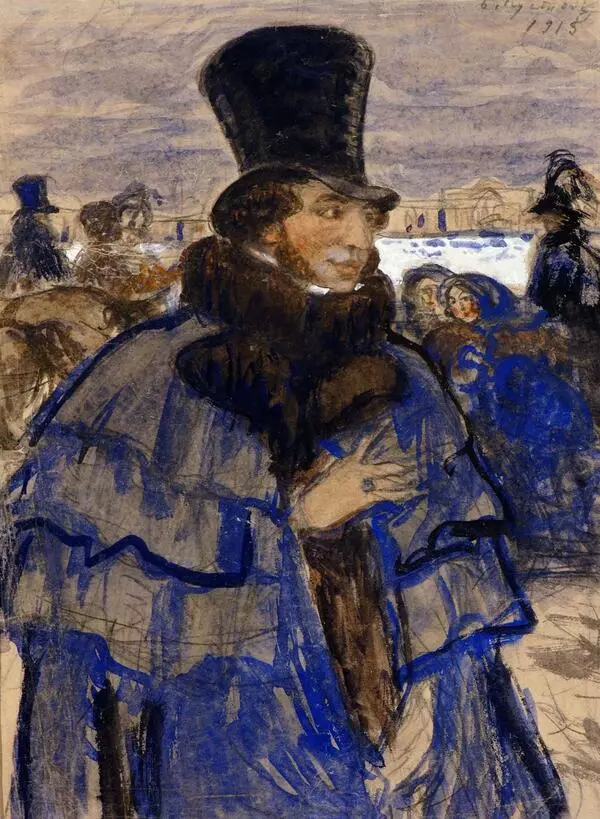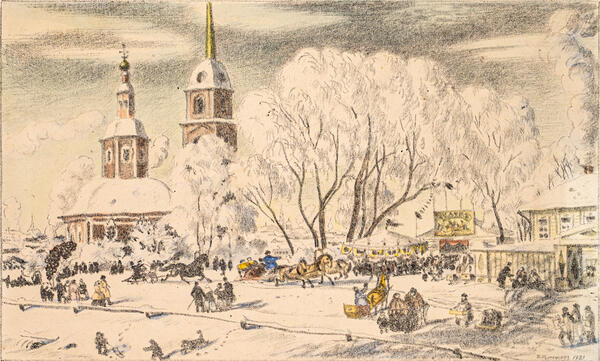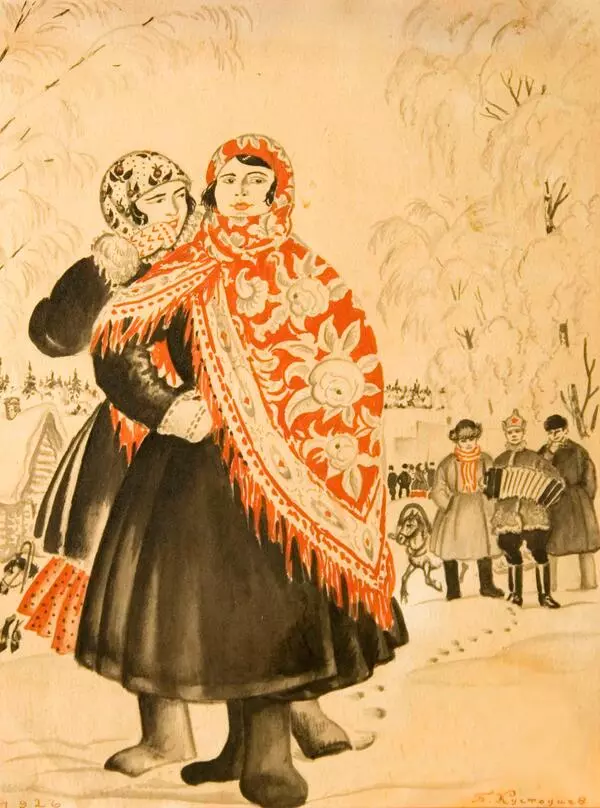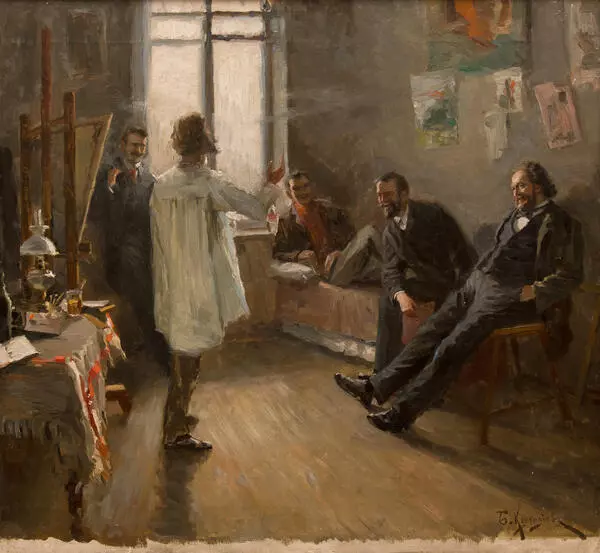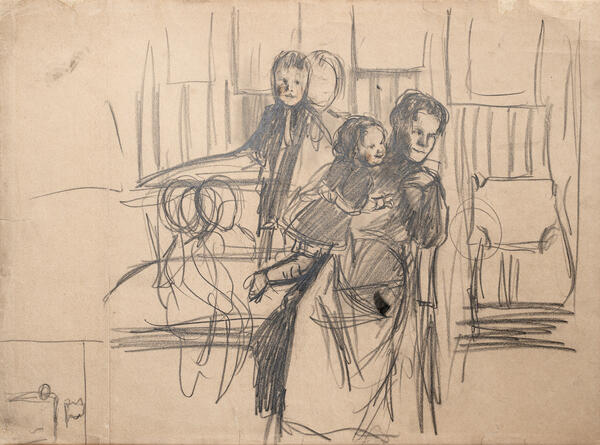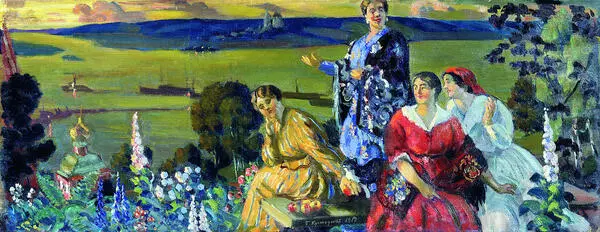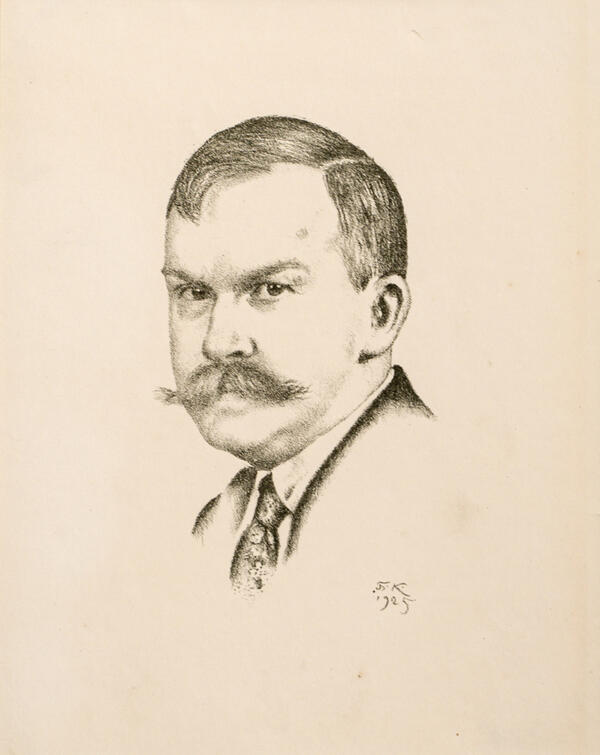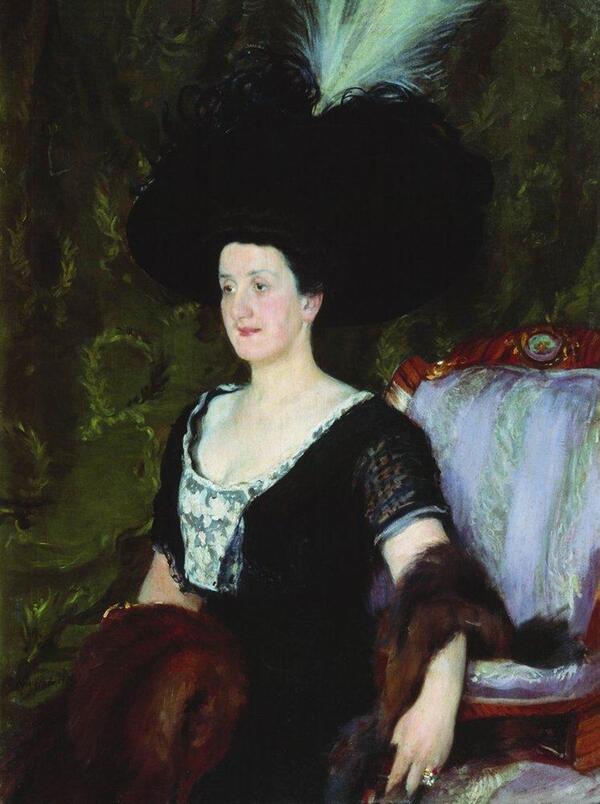The painting “Summer Holiday” in the art collection of the Boris Mikhailovich Kustodiev House Museum was painted by the artist specifically for the American Exhibition of Russian Art, which opened in New York on March 8, 1924.
The mentioned summer holiday is Trinity Day when everyone goes out to the river for the festivities. Kustodiev conveys his observations on the canvas in a convincing and masterful manner. He paints a typical landscape of Central Russia, with majestic wide rivers washing the green shores. The city is spread out over a steep bank under the high sky, covered with puffy clouds. The painter uses a rather generalized image, without depicting some specific place. On the fresh bright green grass on the riverbank, the celebration of Trinity Day is already in full swing: couples, families, and groups of people enjoy a nice walk. The beautiful weather, the smart clothes, and the light color palette create a cheerful mood for everyone who looks at the painting. To the right, at the very edge of the picture, a gallant in a yellow shirt is shown entertaining his girlfriend by playing the accordion, and behind them is a fun and bright merry-go-round. The artist has placed a merchant’s family in the center of the painting. A group of women is engaged in a light-hearted conversation with a girl, who holds a doll in her hands; an imposing merchant’s wife in a dark blue silk dress throws a shawl strewn with roses over her shoulders — not to protect herself against the cool breeze but rather to show off and boast of a beautiful and expensive piece of clothing. A respectable merchant with a broad and thick beard closely listens to their conversation. Behind them, a young man with a dog is in a hurry to get somewhere. There are people strolling, laughing, and buying sweets; young women are seen flirting, and small groups of townspeople relax on the riverbank. On the left, another company rests in the shade: two young women in light-colored dresses sit on the grass, talking to a young man, against the background of a neat, brightly colored church. In this painting, Kustodiev shows his quality as a master of detail, outlining even the smallest figures far away by the river.
Created in 1923, the painting does not reflect the
realities of the time and society surrounding Kustodiev in those days. It is a
reminiscence of the joys of the past: nobody wore such clothes anymore, and
Trinity Day festivities were banned in the Soviet Union, but still, the soul
longed for those delights and celebrations. And so, the holiday reappeared,
albeit on canvas.
